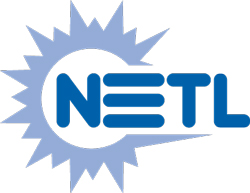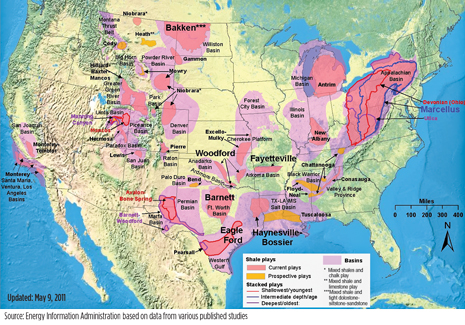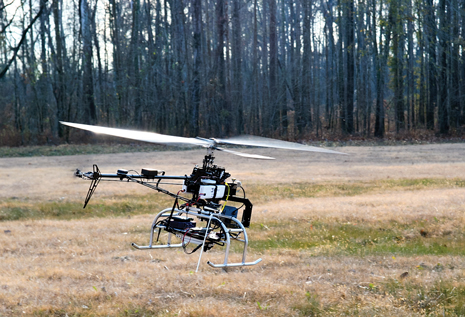
ROY LONG, National Energy Technology Laboratory, US Department of Energy
The economic and social development of the United States has depended on abundant and affordable sources of energy. The National Energy Technology Laboratory (NETL) continues a 100-year legacy of the US government working with the energy industry and the academic community to develop the long-term technologies that will be essential to the maintenance of those resources. Beginning with coal, NETL has funded technology research and development that has longer-term returns on investment and, therefore, would not normally be funded by industry alone.
ABOUT NETL AND SCNGO
Within NETL, the Strategic Center for Natural Gas and Oil (SCNGO) is tasked with funding research and development of technologies for the upstream industry. The development of shale gas in the US is a prime example of the value of DOE/NETL-funded research. A $92 million research investment in the 1970s by the US Department of Energy (DOE) is today being credited with some of the technological contributions that have stimulated the development of shale gas, Fig. 1.
Resource quantification. More than 30 years ago, fears of dwindling domestic natural gas supplies pushed US researchers to examine alternative sources such as Devonian shale, coal and low-permeability or “tight” sands. Recognizing the need for R&D to quantify these unconventional reservoirs and to develop ways to produce them, DOE’s Office of Fossil Energy invested in Devonian shale research from 1977 through 1992, matching technology to complex geology for various geologic settings.
Through programs focused on Eastern gas shales, Western gas sands and methane from coalbeds, DOE developed and stimulated the deployment of advanced E&P technologies. These technologies helped recover new gas supplies from unconventional sources by increasing per-well gas recovery efficiencies and lowering unit development costs.
NETL employed a detailed resource characterization and technology development approach that geologically partitioned each gas resource and matched technology to geology to chart a path for resource development. More than 25,000 ft of oriented core and well log data from 35 cored shale wells provided the basic data used to prepare the first publicly available estimates of technically recoverable gas for the Huron shale in West Virginia, Ohio and Kentucky.
Horizontal shale drilling. In 1986, DOE collaborated with the industry to achieve a significant milestone: the first air-drilled horizontal Devonian shale well in the Appalachian basin. This 2,000-ft-long well also marked the first recovery of core from a horizontal air-drilled shale well and the first successful use of external casing packers in an air-filled wellbore. Through 1992, DOE worked with the industry to complete three additional 2,000-ft-long horizontal wells containing multiple hydraulically fractured zones and to develop more efficient downhole tools, such as electromagnetic measurement-while-drilling and directional air hammer technology, both of which were commercialized.
Fracture mapping. DOE also took an early role in the development of fracture mapping—a technique that uses seismic responses to identify the orientation and extent of hydraulic fractures. Today, a number of companies successfully map fractures in the major shale plays.
NETL/SCNGO SCOPE
For heightened emphasis on safety and the environment, NETL has funded several flowback and produced water cleanup technology developments, while also funding research on technologies to reduce development footprint, extend the understanding of hydraulic fracturing and improve its performance. NETL’s focus on unconventional gas technologies is complemented by research and development in deepwater, high-pressure/high-temperature (HPHT) technologies, and technologies to help small producers achieve greater efficiencies in exploration, drilling and production.
Current upstream research and development carried out by SCNGO within NETL is primarily conducted in two programmatic areas: research by the Research Partnership to Secure Energy for America (RPSEA) funded by NETL, and a complementary research program that augments RPSEA research activities, conducted by NETL’s Office of Research and Development (ORD). A third programmatic area is referred to as the “core program” and includes various areas of research supported by prior DOE annual appropriations in areas such as hydrates and the environment. To see details of all current NETL research, visit netl.doe.gov/technologies/oil-gas/index.html. For details on all completed NETL research and development projects, visit the NETL Knowledge Management Database at netl.doe.gov/kmd. All reports are downloadable at no charge.
 |
|
Fig. 1. Early research by NETL was instrumental in delineating and developing the considerable shale gas resources of the US.
|
|
 |
|
Fig. 2. A remote controlled helicopter monitors atmospheric emissions from oil and gas drilling and production operations in an NETL-funded project.
|
|
ENERGY POLICY ACT PROGRAMS
The Energy Policy Act of 2005 has added another dimension to the overall NETL/SCNGO research and development effort, enhancing opportunities to demonstrate technologies in the field and accelerate their implementation in the marketplace. Title IX, Subtitle J, Section 999 of the law establishes the Ultra-Deepwater and Unconventional Natural Gas and Other Petroleum Resources Research Program, a public/private partnership valued at $400 million over eight years. The program is designed to develop technologies to increase US oil and gas production and reduce the nation’s dependence on imports. A portion of the funding is directed toward cost-shared research, while another portion is used by NETL to carry out complementary R&D. The funding for the program is prescribed by the Energy Policy Act:
• Ultra-deepwater architecture and technology (35% of funds)
• Unconventional natural gas and other petroleum resource exploration and production technology (32.5%)
• Work to address the technology challenges of small producers (7.5%)
• Research complementary to the above conducted by NETL (25%).
The law requires DOE to competitively select and award a contract to a consortium to administer the cost-shared portion of the program, which is composed of three elements: Ultra-Deepwater, Unconventional Resources, and Small Producers. RPSEA, a 501(c)(3) not-for-profit corporation consisting of more than 180 member organizations, is the industry consortium selected to administer these three elements. NETL, on behalf of the Office of the Secretary of Energy, maintains oversight and review of the contract with RPSEA and the entire R&D program. The companies, universities, and other organizations that receive funds through this program provide cost-share contributions of 20%–50% or more.
The current status of the Section 999 portfolio is 87 active projects, of which 33 are in Ultra-Deepwater, 35 in Unconventional Resources, and 19 in Small Producers. Of the 2007 projects, a total of 12 have been completed to date.
Requests for proposals (RFPs) for 2010 projects in the Unconventional Resources and Small Producers programs have closed, and awards should be made soon. Two RFPs in the Ultra-Deepwater program have closed, and four are currently open. Details of the 2010 RFPs can be found at rpsea.org/req_proposals. The 2011 Energy Policy Act annual plan is under review.
COMPLEMENTARY PROGRAM
The Complementary R&D Program was initiated by ORD with four principal areas of focus:
• Drilling Under Extreme Conditions
• Environmental Impacts of Oil and Gas Development
• Enhanced and Unconventional Oil Recovery
• Resource Assessment.
Another activity is identifying and quantifying the benefits that are expected to accrue as a result of the entire Section 999 program. This activity supports DOE’s analyses in compliance with the requirement in the Energy Policy Act of 2005 to estimate potential cumulative increases in federal royalty receipts as a result of the Section 999 program. The Drilling Under Extreme Conditions project area provides the capability of studying drilling production issues in HPHT environments where temperatures and pressures can reach 250oF and 30,000 psi, respectively. The Environmental Impacts project area includes research that inventories airshed profiles using sensors mounted on unmanned aircraft to monitor emissions plumes from oil and gas operations, Fig. 2. This permits 3D measurement of constituents within the dispersion plume and will provide a basis for air quality models that better represent the effects of constituents from widely dispersed oil and gas sources.
Activities in the Enhanced and Unconventional Oil Recovery area include the development of new technologies that improve upon current oil extraction processes, while the Resource Assessment area includes a detailed assessment of the Marcellus shale in the Appalachian basin, utilizing high-resolution analytical reservoir characterization techniques. The project is integrating higher resolution instrumentation to evaluate the molecular distribution of components in the shale. The results will be used to help determine the mechanisms of gas storage and movement through the matrix and fractures of the shale to the wellbore, which will lead to more accurate reservoir modeling.
THE WORLD OIL SERIES
Beginning in September, NETL and World Oil will provide quarterly updates on various research and development projects within the Energy Policy Act and Complementary programs. 
|
THE AUTHOR
|
|

ROY LONG is the Technology Manager for NETL’s Energy Policy Act 2005 Ultra-Deepwater and Unconventional Resources program areas. Mr. Long is a petroleum engineer with a career focus on technology development related to exploration and production. He is a 1970 graduate of the US Air Force Academy and received his MSc degree in petroleum engineering from the Colorado School of Mines.
|
|
|






